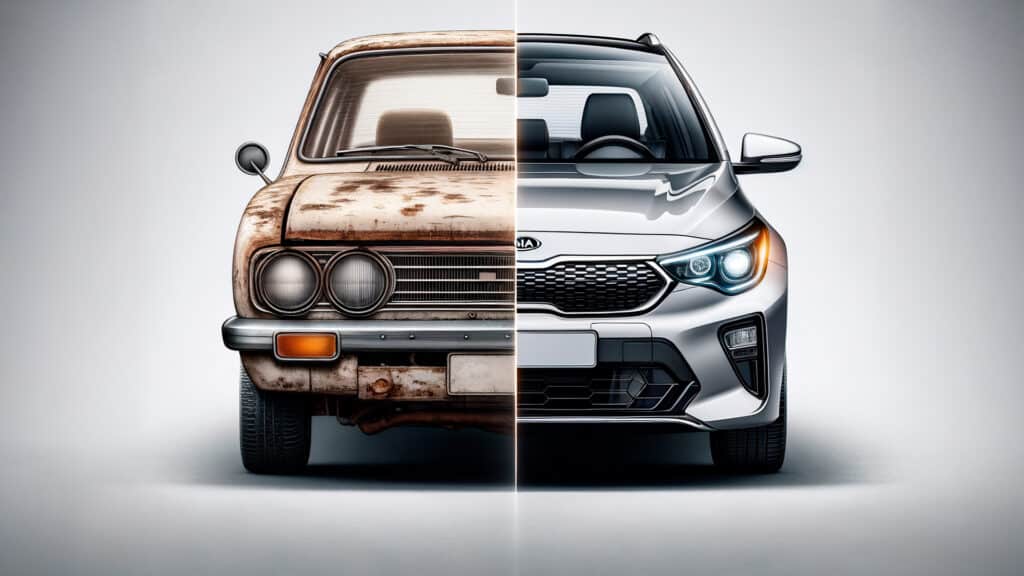
In 2024, Kazakhstan’s used car market reported near-zero sales growth amid a decline in used car prices. This resulted from a quantitative and qualitative expansion in the availability of brand-new vehicles.
Official dealers set a historic record in passenger car sales, surpassing 200,000 units sold last year. The booming sales were driven by several factors, including favorable financial instruments such as auto loans with no initial payment, soft loans, installment plans and debt standstills offered to customers in conjunction with second-tier banks. Additionally, auto dealers did not hesitate to offer significant discounts on major holidays or before updating their product ranges.
Experts believe the abundance of attractive offers for brand-new cars from official dealers was one of the reasons for the decline in the used car market. For example, used cars are competing with Chinese brands, which hold strong market positions in the price segment up to $19,500. This trend first emerged in 2023 and continued into 2024.
According to the Ministry of Internal Affairs, 1,487 passenger cars were re-registered in Kazakhstan last year. This marks a 6% year-on-year decline (90,000 fewer cars) compared to 2023 when authorities re-registered 1,577 passenger cars. Analysts from the Association of Automotive Business of Kazakhstan (AKAB) also confirmed stagnation in the used car market, although available statistical data covers only the first three quarters. Citing their figures, experts said that 803,000 passenger cars were re-registered in the first nine months of 2024, aligning with the figures from the same period in 2023.
«The number of transactions in the used car market has stabilized after the pandemic turmoil of 2020-2022 and will likely decline as official dealers expand their offerings of new models in the under-$19,500 segment. As a result, consumers are more prone to buying a brand-new car rather than a used one. Furthermore, they can rely on various financial programs such as debt moratoriums, installment plans, subsidized loans and other tools,» said Arthur Miskaryan, head of the Agency for Monitoring and Analysis of the Automotive Market.
Changes in used car prices
Sellers’ price expectations are not driving sales either. Some brands, primarily European, experienced significant price increases in the used car market when official dealers struggled with supply problems between 2021 and 2022. At the time, used car prices either stagnated or even increased. According to AKAB, in 2022, used Mercedes-Benz cars saw a 221% price increase, BMW rose by 158%, Audi by 107% and Volkswagen by 100%.
However, as the shortage of brand-new cars eased, used car prices began to gradually decline. MyCar, a major player in the used car market, reported that in 2024, the average price of used cars in its network decreased from $27,270 to $23,370, a 14% drop.
According to MyCar, the price decline in the used car segment is driven by the emergence of new players in the new car market. Between 2023 and 2024, official dealers began selling brands such as Kaiyi, Jetour, Omoda, Tank, and Skoda.
Which brands saw the biggest price declines in the used car market?
Although MyCar declined to name specific brands, it noted that those most affected by the previous shortage of new cars experienced the largest price declines.
The long-standing leaders of Kazakhstan’s used car market are Toyota, along with Lada, Hyundai, Mercedes-Benz, Volkswagen, Audi, Kia, Nissan, Mitsubishi and BMW.
There is not a single Chinese brand in the top 10 of the used car market. Chinese cars remain relatively rare, accounting for just 3% of total sale advertisements on Kolesa.kz, the most popular platform for car buyers and sellers in Kazakhstan, according to Kolesa Group CEO Dmitriy Botanov.
«There are no significant discrepancies between demand for Chinese cars and vehicles made in any other country. We see that supply is slightly outstripping demand, although the difference is minor,» Botanov said at the KURSIV AUTO 2024 forum in June 2024. The expert also highlighted popular models from Japanese, South Korean, and Chinese brands that are more resilient to price depreciation.
«We analyzed the Camry, Tucson and other popular models. Vehicles acquired between 2019 and 2021 lost about 20% of their value per year, compared to the Chery Tiggo, which depreciated by 22% annually. This means that in terms of liquidity and user experience, Chinese cars do not significantly differ from other vehicles,» he said.
Based on available data, concerns about the liquidity of Chinese cars in the used car market appear to be unfounded. MyCar reported that sales of used Chinese cars grew by 40% in 2024.
«The current trend is as follows: the more brand-new Chinese cars we sell, the more stable the residual value of these vehicles in the used car market. When MyCar first introduced Chinese brands to the market, their liquidity was much lower due to the lack of user experience. The situation has changed now. Consumer confidence in used Chinese cars is growing,» MyCar stated. «It is clear that Chinese automobiles are newcomers to the used car market. As a result, used Chinese cars will struggle with longer sale periods and higher depreciation rates compared to brands that have been established for years,» Miskaryan said. However, the expert emphasized that the situation will likely improve as the share of Chinese cars in Kazakhstan’s overall car fleet grows. «High-quality service and the availability of spare parts — factors that vary by brand — will play a crucial role,» he added.

